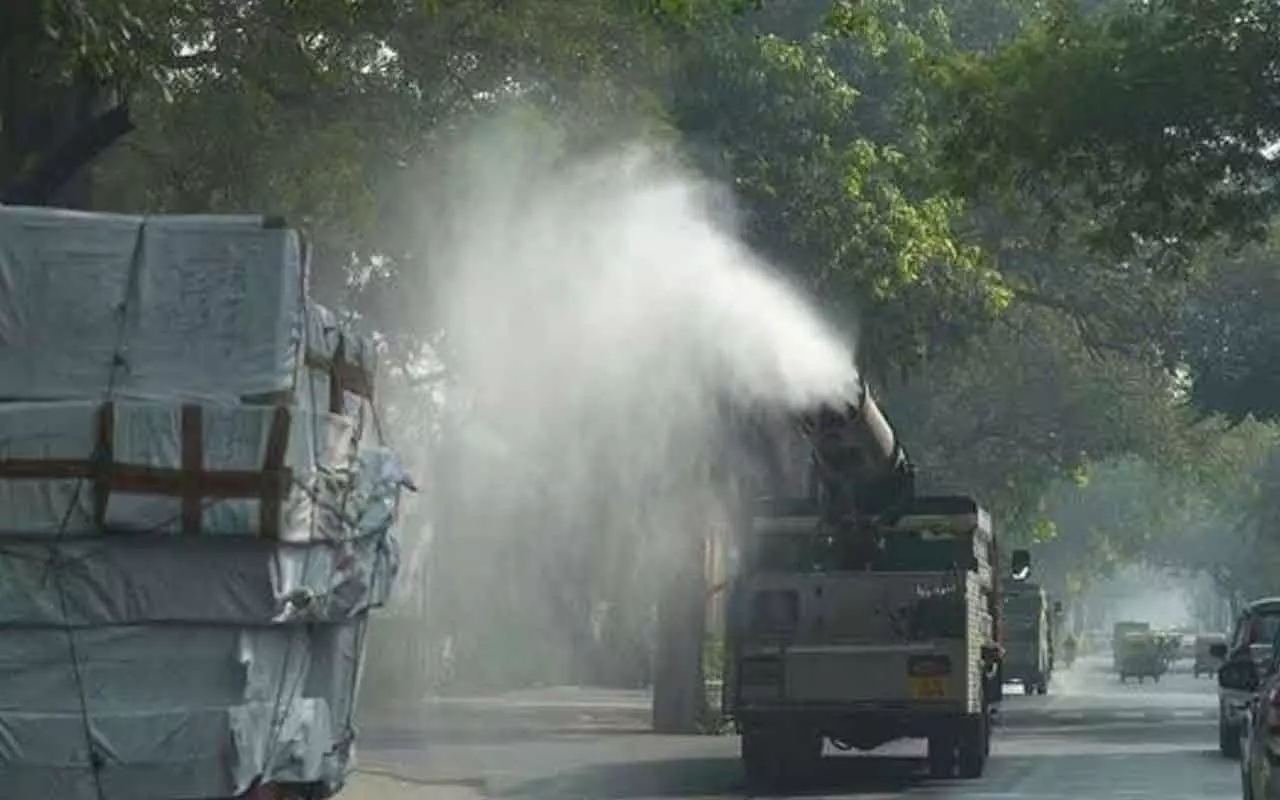Good Practices In Clean Air Action
Indian cities and towns show promise, but gaps persist, finds CSE review. Among the cities evaluated, Delhi emerged as a frontrunner in implementing multi-sectoral pollution control strategies
Good Practices In Clean Air Action

More than five years since the launch of its National Clean Air Programme (NCAP), a new review by the Centre for Science and Environment (CSE) has noted progress as well as persistent gaps in the country’s fight against air pollution menace.
CSE’s latest report, Driving Clean Air Action under NCAP, released today, on May 29, at a national conference in New Delhi, evaluates the on-ground implementation of clean air measures in various Indian cities.
Focusing on vehicles, industries, solid waste, and construction and demolition (C&D) waste, the report uses case studies from cities including Delhi, Kolkata, Noida, Surat, Indore, Kochi, Srinagar and Bengaluru.
"Clean air action needs to be taken sector by sector and within each sector, we need game changers," saidSunitaNarain, Director General of CSE, addressing the conference.
“Incremental action will not solve the pollution problem. We need transformational measures," Narain added.
Key wins and misses
While NCAP has made strides in establishing a national framework for air quality management, including identifying non-attainment cities and linking funding to performance, the CSE review also notes that its interventions remain heavily concentrated on controlling road dust —particularly in the Indo-Gangetic Plains. “NCAP has definitely created a national architecture for clean air action,” said AnumitaRoychowdhury, Executive Director of CSE's Research and Advocacy unit.
“But our assessment shows that funding and efforts are disproportionately focused on dust control, while critical sectors like combustion and industry remain under-addressed,” she added.
Roychowdhury clarified that the report was not a 'report card' grading cities but rather an exploratory look at emerging good practices that could serve as models for replication across the country.
Delhi is leading, yet
lagging
Among the cities evaluated, Delhi emerged as a frontrunner in implementing multi-sectoral pollution control strategies. Its efforts predate NCAP, driven by court-mandated interventions like converting public transport to CNG, banning polluting industrial fuels, and phasing out older vehicles.
More recently, Delhi’s policies have included restrictions on diesel generators, hotspot-based action plans, and an electric vehicle (EV) policy that has pushed fleet electrification to 12 per cent.
Its C&D waste management system — featuring geo-tagged collection points, colour-coded bins, and mobile apps — was highlighted as a model for the country. “Delhi has demonstrated how a strong regulatory mandate and clear targets can drive action,” said Roychowdhury.
“But even after years of aggressive action, the city still needs to reduce PM2.5 levels by 60 percent to meet national standards,” she added.
Varanasi, Kochi and Srinagar: Sectoral insights
The report also spotlighted Varanasi, where dust contributes a staggering 84 per cent to particulate pollution. While the NCAP has helped formalise air quality efforts there, more structural changes — like urban redevelopment and greening — are needed to tackle dust effectively.
In the transport sector, Kochi is developing a multi-modal system powered by solar energy, while Srinagar is using Smart City funds to upgrade public spaces, build pedestrian infrastructure, and even launch electric boats on the Jhelum River.
“Good practices are emerging,” said Shambhavi Shukla, Programme Manager for Clean Air and Sustainable Mobility at CSE. “But these are still works in progress, and many face serious implementation gaps.”
Bengaluru, Bhubaneswar and Chennai: Transport innovations
The review praised Bhubaneswar for overhauling its bus system from the ground up and Bengaluru for modernising its public transport network internally.
Chennai’s emphasis on walking and cycling infrastructure, under a city-wide Non-Motorised Transport (NMT) Policy, was also acknowledged as a significant step.
Kolkata, meanwhile, has set itself apart by using remote sensing technology to monitor on-road vehicular emissions — an innovation yet to be adopted by other major cities.
Tackling industrial and waste emissions
The review found that industrial pollution remains one of the most difficult challenges under NCAP, largely because industrial zones are typically located outside municipal limits. However, some states have shown leadership.
“Gujarat’s adoption of a common boiler policy and Odisha’s investment in Continuous Emission Monitoring Systems (CEMS) are good examples of how targeted technology can improve compliance,” said Roychowdhury.
Waste management is another area of emerging strength. Indore has achieved zero-landfill status by closing the loop on its entire waste system. Pune’s integration of informal waste workers into its collection systems was lauded as an equitable model. Cities like Bhopal and Ambikapur have also made notable strides through rigorous by-laws and structured waste management centers. Hyderabad was highlighted for its decentralised C&D waste management approach through four public-private partnership plants. Noida’s recycling plant and Pimpri-Chinchwad’s third-party monitoring model were also singled out for significantly reducing dust emissions.
The road ahead
Despite the progress, CSE’s review emphasizes the urgent need to scale up these good practices nationwide and embed them within broader policy frameworks.

